Summit Summary & Key Takeaways
The RDSA 2022 Annual Summit provided an opportunity for federal, state and local government, industry and business to better discuss the housing and workforce issues in our regions.
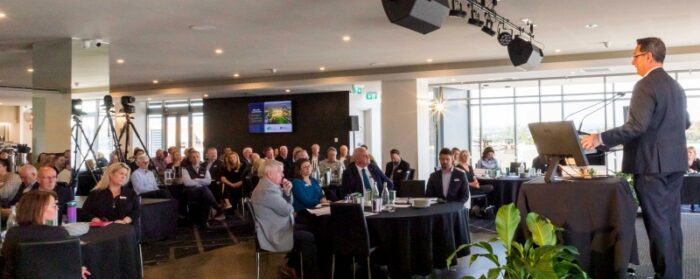
In Part 2 of our summary of the Summit, we provide an overview of the second half of the day. This featured case studies of businesses on the ground and the practical steps they are currently taking, or are considering, to address housing and/or workforce challenges in their communities.
READ PART 1
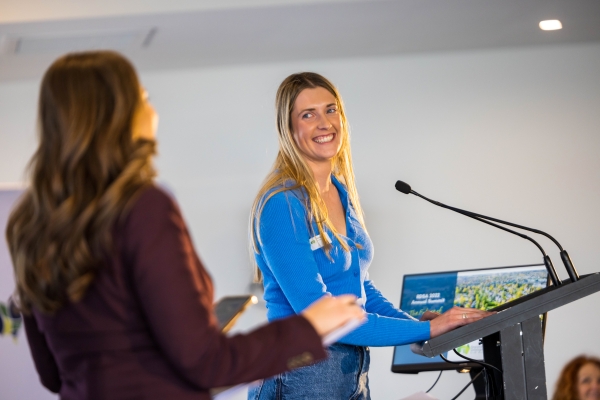
Marketing/Media Director Zerella Fresh

General Manager Viterra
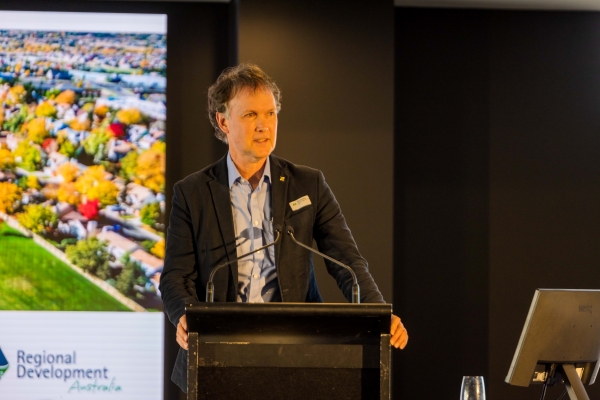
ED Clinical InnovationRiverland Mallee Coorong LHN
Case Study – Zerella Fresh
Renee Pye: Marketing and Media Director
Zerella Fresh grow, wash and pack potatoes, carrots and onions for distribution across Australia. With ongoing consumption growth, it was time for Zerella to expand to keep pace with demand from supermarkets and consumers.
Although their potatoes are grown and harvested in the Mallee, Zerella’s potato washing plant was positioned up against the Gawler River in Virginia. Not only was there little room for expansion, it also required a significant journey to transport potatoes to the plant for processing.
To streamline operations, it was decided to relocate and expand the factory with a new packing shed at Parilla. One of the biggest challenges would be to recruit staff and find accommodation for them. Renee set out on a mission to determine availability of housing and vacant land in the region, however the housing she found was not of the standard needed to attract new staff and their families. Additionally, Zerella would be competing against other local businesses in a very tight housing market.
The path Zerella chose was to purchase land and work with building contractors to create storm water and effluent systems, and engage with SA Water and SA Power to provide utilities to the development. They now have 7 transportable homes across Lameroo and Pinnaroo, which they have offered up as an investment opportunity to their staff and local members of their community.
This has allowed them to add around 90 permanent employees to their working family in the Mallee.
Case Study – Viterra
Alyson Gilbey: General Manager
Viterra is one of the largest buyers of Australian commodities nation-wide, with around 2,200 permanent and casual employees in multiple locations across South Australia.
While COVID-19 didn’t impact Viterra’s exports, Alyson discussed the impact of COVID and housing shortages on attracting and retaining staff, which has seen the number of candidates for seasonal employment decrease quite noticeably since the start of the pandemic.
In the past 12 months, Viterra has spent some $80m on wages, with an additional $1.8m on accommodation for casual workers and contractors who may move to a region during harvest for short-term employment. Accommodation options include hotels, caravan parks and some local housing, but Viterra have recognised the need for long-term accommodation planning to ensure they can house their workers both now and into the future.
After considering a range of options from doing nothing, through to leasing or purchasing dongas or houses, along with the long-term impact of each option on local communities, Viterra settled on a range of strategies which include:
- Investing in a long-term accommodation project
- Working with councils to establish permanent worker accommodation that can be used across industries in regional areas.
- Establishing short-term accommodation options for harvest period in localised areas.
- Finding ways to work with existing accommodation available in certain locations during harvest.
Alyson underscored the need for a tailored approach to each region based on the needs of both employees and what options would be most suitable for each location. By ensuring a flexible approach to accommodation, this would benefit local growers, communities and the workers who are drawn into those areas on either a seasonal or permanent basis.
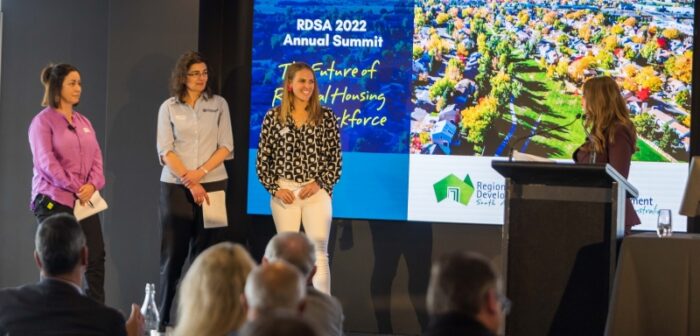
Case Study – Limestone Coast Leadership Program
Peta Crewe: General Manager Regions PIRSA
Kirsty Starling: Owner and Director Maroona Station
Kristen Wilks: Owner and Director Lacepede Seafood
Peta Crewe introduced this case study with an overview of the Limestone Coast Leadership Program which ran from 2019-2021. Designed in partnership with, and delivered by, the Leaders Institute of South Australia the program was rolled out to all 7 local government areas within the Limestone Coast region.
Accepting 15 participants per year, the aim of the program was to stretch the capabilities of existing and emerging leaders to ensure they had the relevant skills to work with, and influence others, for the benefit of the region. The program covered a range of leadership topics such as:
- Personal leadership styles
- Motivating and mentoring
- Governance and finance
- Public speaking
- Building relationships
- Managing change
- Emotional intelligence
- Economic development
- Community action projects
Kristy and Kristen then took the stage to share their experience in the program and how it has helped them to advocate for meaningful change in their community.
They had joined the Leadership Program to expand their professional development, build a stronger connection with their community and to push themselves out of their comfort zone. On the back of this, they came together to tackle the issue of limited childcare services in their town.
While there are a range of childcare options a readily available in metropolitan areas and larger towns, Kingston residents were struggling with insufficient access. As a result, many women who are willing and able to transition back into the workforce find themselves unable to do so due to the need to look after younger children during the day.
Using the skills they developed in the Leadership Program, Kristen and Kristy created a working group to advocate the same early childhood education and workforce participation opportunities that their city counterparts enjoyed.
As a result, they now meet regularly with the State Government and Education Department to discuss their project and needs of the community. They were able to secure bipartisan support for $1.8m in funding to support the building of a childcare centre next to the Kingston Community School that will initially take on 3 workers 3 days a week.
Now they “have a seat at the table” they are continuing their advocacy for childcare reform in South Australia, and are currently in the process of costing up plans for their childcare centre.
Case Study – Riverland Mallee Coorong Local Health Network
Paul Worley: Executive Director Clinical Innovation at Riverland Mallee Coorong Local Health Network
Paul spoke about the challenges of attracting and retaining medical staff into regional areas, and how his organisation decided to take a different approach.
He suggested that many regional medical clinics and hospitals have a tendency to offer lower wages than their metropolitan counterparts. This has resulted in regional towns finding it difficult to recruit medical practitioners on a long-term or permanent basis, as many are keen to move back to metro areas and higher wages once their country residencies are complete.
This provides poorer outcomes for those living in regional and rural areas, who either have limited access to healthcare services, including GPs and specialists, or lack healthcare continuity as one locum replaces another.
To provide greater incentive for new and existing medical professionals to move to regional areas on a permanent basis, his practice decided to provide salaries competitive with metropolitan centres along with 4–5 year employment contracts. The aim is to encourage practitioners to become embedded in the local communities and view regional opportunities as a viable career move, rather than a stepping-stone in their career path, which so far seems to be having the desired effect.
Panel Discussion + Audience Q&A
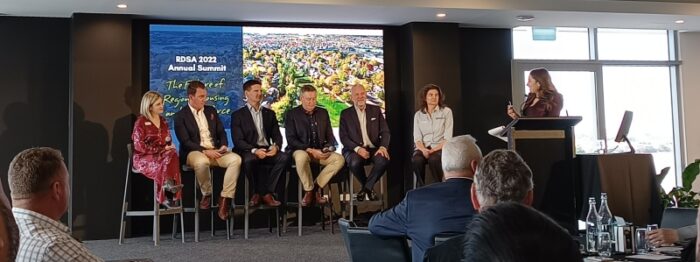
The Summit drew to a close with a final discussion panel and the opportunity for attendees to submit questions.
Discussion was had around how to support pensioners who may be willing and able to venture back into the workforce, such as tax reform to ensure they were not at a financial disadvantage from loss of pension for income earned. It was also suggested that while some older Australians may not have the physical capacity for some roles, that they had a wealth of knowledge and transferrable skills to provide support in other areas.
There was more discussion around the lack of available housing for those who may wish to move to the regions and how, in some instances, red tape was causing bottlenecks in accessing building supplies. Low salaries in hospitality and trades were also highlighted as a barrier to attracting workers, particularly given the cost-of-living increases in regional areas due to housing stock shortages.
The lack of investment in regional TAFEs and centralisation of tertiary education was raised as a factor in young people leaving our regions and contributing to subsequent skills gaps. However, there was much support for the RDA Leadership Programs, as well as discussion around how local leaders could be supported to avoid burnout.|
This is where the day concluded, allowing attendees to conversations at the networking event which featured a delicious array of canapés showcasing local produce.
Find full agenda and speaker presentations here.
